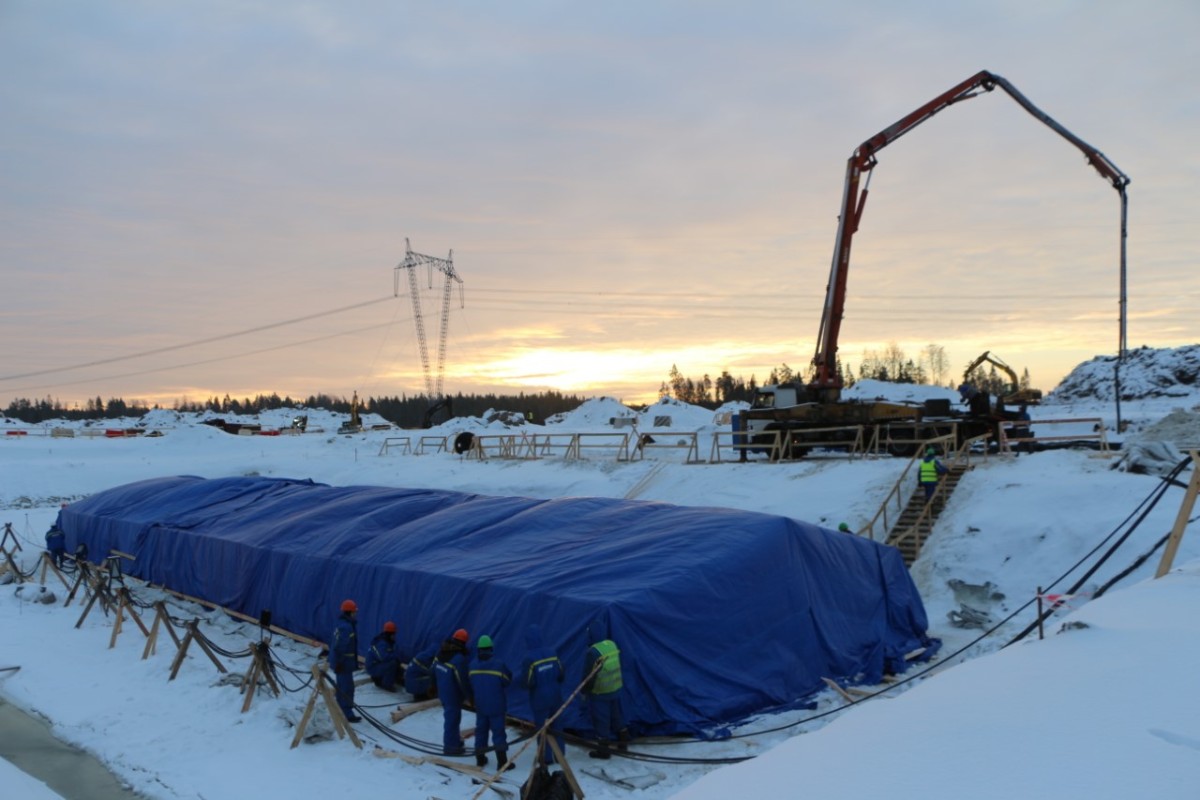 First concrete has been poured for the foundation of the combined pumping station for fire-fighting water supply and automatic fire extinguishing at the site of Russia’s Leningrad-II NPP (LNPP-II) units 7&8. “This is the first building of the entire complex of buildings for this new stage. The pumping station will ensure fire safety during the construction and will pave the way to pouring concrete for the nuclear island of unit 7 in 2024,” said Evgeny Milushkin, Deputy Director for Capital Construction at LNPP-II.
First concrete has been poured for the foundation of the combined pumping station for fire-fighting water supply and automatic fire extinguishing at the site of Russia’s Leningrad-II NPP (LNPP-II) units 7&8. “This is the first building of the entire complex of buildings for this new stage. The pumping station will ensure fire safety during the construction and will pave the way to pouring concrete for the nuclear island of unit 7 in 2024,” said Evgeny Milushkin, Deputy Director for Capital Construction at LNPP-II.
Construction of the pumping station will include14 pieces of equipment and involve 40 employees of the contractor, Titan-2 . The foundation will require 300 cubic metres of special concrete characterised by high frost resistance, elasticity and water resistance. To strengthen the concrete, workers will warm it up with heat guns in cold weather.
“This concrete combines unique technical characteristics and performance. It is excellent for the construction of buildings in harsh climatic conditions. The foundation of the pumping station will retain its strength far beyond the design life of the new units (60 years)," said Konstantin Khudyakov, Titan-2’s director of the programme for units under construction at LNPP-II. He added that this concrete is environmentally friendly containing only natural components. After hardening, the concrete mixture is similar to natural stone.
Construction, installation and commissioning work on the integrated pumping station will be completed in November-December 2023, after which the main stage of construction of units 7&8 will begin. Preparatory work is already is underway at the site including deforestation, and vertical planning. The construction and reconstruction of facilities is underway as individual investment projects. As well as the integrated pumping station, these include a railway section from Kalishche station to Leningrad NPP.
As to the vertical planning Titan-2 specialists will have to make a 71-hectare site level and suitable for the construction of the units. Differences in the height of the earth will be eliminated, the runoff of surface, melt and rain water will be organised, and conditions will be created for safe traffic and members of the building workforce.
“The beginning of the vertical layout for the new power units is one of the most important preparatory events of this year,” said Vladimir Pereguda, director of the Leningrad NPP. The logging work is coming to an end. The construction of the integrated pumping station is proceeding at a faster pace. Preparatory work is underway on the transformer substation 110/10 kV. Construction is gaining momentum.”
“The terrain for the new units will be minimally changed,” said Evgeny Milushkin, Deputy Director for Capital Construction, Head of the Capital Construction Department of LNPP-II. - The volume of excavation of fertile soil will be approximately 500,000 cubic metres. The builders will take it to a temporary storage site.” After the power units are built, the fertile land will be returned to the site and used for landscaping. The remaining soils totalling about 200,000 cubic metres are used for backfilling the site.
Khudyakov said 40 people and about 15-20 pieces of equipment (bulldozers, excavators, dump trucks) will be involved in the vertical planning of the site. Some 7,000 builders and installers will work at the site during the construction of power units.
Currently Leningrad NPP has four units in operation – the original units 3&4 with Soviet RBMK-1000 reactors, as well units 5&6 (or LNPP-II 1&2) with new VVER-1200 units. Units 5&6 replaced units 1&2 with RBMK-1000 reactors, which were decommissioned in 2018 and 2020. The new units 7&8 will replace the original units 3&4.
Image: First concrete has been poured into the foundation of the combined pumping station for fire-fighting water supply and automatic fire extinguishing at the Leningrad-II NPP (courtesy of Leningrad NPP)



